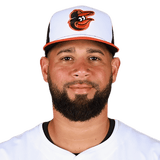
New York Yankees: What Gary Sanchez Regression Looks Like
Gary Sanchez had a phenomenal two months to close out the 2016 season, but what can we expect from the slugging catcher in his first full big-league campaign with the New York Yankees?
Gary Sanchez set the baseball world on fire when he was called up for good this past August. In just 229 plate appearances he put up tremendous numbers worthy of a second-place finish in the AL Rookie of the Year voting, slashing .299/.376/.657 with 20 home runs and 42 RBI. With the Yankees in retooling mode — the New York Yankees don’t rebuild — and with Brian McCann now wearing an Astros uniform, Sanchez will catch all the games he can handle in 2017. Some of his numbers are unsustainable, but just how much can Sanchez produce if cemented into the three-hole of the Yankees lineup for six months?
Depending on your perspective, Sanchez is either not as old or not as young as you think. He spent six and a half years in the minor leagues, leading to what some may call prospect fatigue. A player can only be on so many forward-looking lists before fans of the big league club wonder if he’ll ever make it. But Sanchez was signed at just 17 out of the Dominican Republic. Conversely, many rookies who make the kind of splash and grab the kind of headlines Sanchez did tend to be a bit younger. Sanchez is actually less than seven weeks younger than Bryce Harper. Harper has had somewhat of a head start in building his resume.
Sanchez drew rave reviews for his ability to handle a major league pitching staff, and most defensive metrics support this. As he matures as a catcher, his defense won’t get worse, so his ability to manage a game will provide value no matter how much his offense may regress. Based on some well-known examples of flash in the pan successes, Yankees fans would be wise to expect some regression.
Certainly you haven’t forgotten Shane Spencer, who popped 10 home runs and drove in 27 in just 67 at bats while slugging .910 in 1998. Maybe Kevin Maas and his 21 homers in 300 plate appearances in 1990 is more your style. He even had a higher walk rate than Sanchez! Just as it would be unlikely and unfair to think Sanchez would fizzle out as those two did, it would be unlikely and unfair to simply extrapolate his 2016 numbers across three times as many plate appearances.
More from Call to the Pen
After an August that was beyond phenomenal, Sanchez actually struggled a bit for the last month of the season. Sure, he had nine more long balls, but he also struck out 30 percent of the time and hit for an average of just .225. Scouting reports became more sophisticated, and pitchers began to adjust. In 2017 we will see if Sanchez can adjust to those adjustments.
Sanchez had some numbers that appear somewhat sustainable. His 10.5 percent walk rate and 24.9 percent strikeout rate were both a little higher than his minor league rates, but not outrageously so. Sanchez’s batted ball profile, on the other hand, could point to some significant regression.
Out of the 146 players who received a full season of 502 plate appearances, only 22 had a higher ground ball percentage than Sanchez’s 49.3 percent. This is not good for a power hitter without much speed. Despite a hard-hit percentage of 41.8 percent, a figure that would have been good for fourth behind David Ortiz, Freddie Freeman and Matt Carpenter, Sanchez’s line drive percentage of 16.4 percent would have been fourth lowest. He hit fly balls only 34.2 percent of the time, but those fly balls turned into home runs a mind-boggling 40 percent of the time.
Nobody else in baseball hit home runs on four out of 10 fly balls. Nobody else in baseball even hit home runs on three out of 10 fly balls. Ryan Braun had the best ratio of qualifying players at 28.8 percent. Khris Davis, Nelson Cruz, Chris Davis and Yasmany Tomas joined Braun as the only players even to reach 25 percent.
Gary Sanchez can still be a very good hitter without approaching the unsustainable heights from his rookie season. 550 plate appearances sounds like a reasonable estimate for a catcher who has the ability to spend a couple games at designated hitter. If Sanchez’s HR/FB rate drops from 40 percent to a more realistic but still outstanding 25 percent, he will project to hit 30 home runs in those 550 plate appearances if everything else remains constant. Some of those homers will become doubles, but many will become outs. A .270 batting average suddenly seems more likely than another run at .300.
If before the 2016 season the Yankees were told that they could have their catcher shut down opposing running games, manage a pitching staff for 130 games, hit .270 and knock 30 home runs as early as 2017, they would have taken that without hesitation. Sanchez won’t be able to replicate his rookie performance over a full season, but it’s better to appreciate what he is than what a small sample size suggested he could be.
